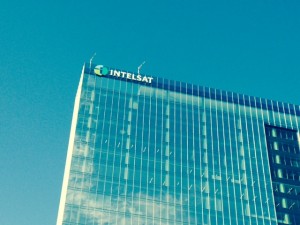
After more than 40 years of operation, DTVE is closing its doors and our website will no longer be updated daily. Thank you for all of your support.
SES and Intelsat move to protect C-band with joint plan
 Satellite operators SES and Intelsat have teamed up to propose the joint use of C-band capacity by satellite and terrestrial mobile operators in the US to the FCC.
Satellite operators SES and Intelsat have teamed up to propose the joint use of C-band capacity by satellite and terrestrial mobile operators in the US to the FCC.
The operators want to the array of established satellite services in the 3700-4200 MHz C-band downlink spectrum while opening a specified portion of that spectrum for terrestrial mobile use.
The pair said that the proposal would protect the distribution of video and audio programming to more than 100 million US households, and the reliable provision of critical data connectivity in rural areas and emergency situations, as well as services delivered to the US government.
The plan builds on a model proposed by Intelsat and Intel last year and would enable wireless operators to acquire about 100MHz of nationwide C-band downlink spectrum for the development of 5G services.
The joint proposal calls for the creation of a consortium, which would be open to all C-band operators providing services in the continental US. The consortium would oversee the governance of the initiative, define and implement the methodology for spectrum clearance, and serve as the sole interface for market-based transactions with parties interested in deploying terrestrial mobile services in specific portions of the C-band.
Karim Michel Sabbagh, President and CEO of SES, said, “The C-band is and remains a critical component of the U.S. network architecture. Space and ground segment operators have invested billions of dollars in USC-band networks and connectivity and generate important value out of it. It is therefore our duty and mission to protect the C-band in the US from any form of disruption and preserve its use. The C-band satellite consortium is to be set up to ensure that the expansion of the C-band ecosystem in the US will protect the interests of hundreds of established services and millions of American end-users, while at the same time paving the way for the creation of next generation 5G terrestrial services.”
Intelsat CEO Stephen Spengler said, “Our priority continues to be creating a framework that provides certainty and protects the quality and reliability of the services we provide to our media, network services and government customers. Our proposed market-based solution provides a speedy resolution to the U. objective of accelerating deployment of 5G services. With Intelsat and SES now in agreement on major tenets of the framework and with the support of Intel, we are confident in our ability to implement this proposal quickly and efficiently, ultimately to the benefit of American consumers and the US economy.”

